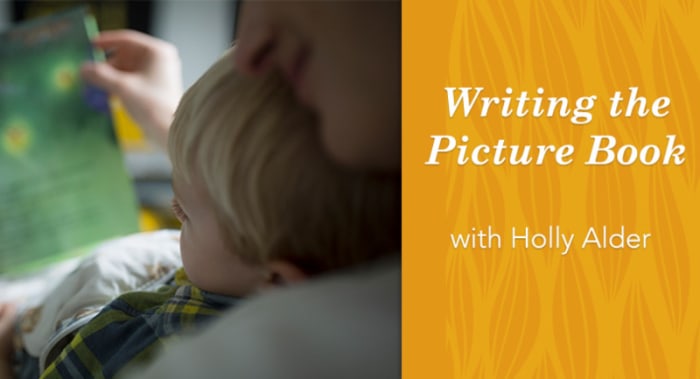5 Steps for Using Setting to Write Compelling Middle-Grade Narrative Fiction
Middle-grade protagonists and readers have minds hungry to define their worlds. It’s the work of this age group, after all, before they grow into young adults with the angst of determining how they fit, or do not, into the worlds they’ve defined. For this reason, setting is vital to middle-grade narrative.
(Why We Should Read Middle Grade Fiction as Adults)
I live in Vail, Colorado, where our inclined Rocky Mountain setting is obvious. Many people live or travel here to ski, snowboard, hike, bike, raft, hunt, kayak, Jeep, camp—to interact or recreate with nature. The surrounding peaks’ zig-zag horizons and seasons set the pulse of our lives, so my latest middle-grade novel, The River Between Hearts, beats to this rhythm. The novel’s opening paragraph reads:
My tree house, Fort Kruse, wasn’t far from home if you had wings. But if you were stuck on the ground, stubby cliffs blocked the way, so the trail looped around. Behind me the creek nagged Rill! Rill! Rill!, making me mad enough to spit. Rosebushes scratched my arms and legs, and spiderwebs stuck to my face. Clifford shot between my shins, making me scream like a girl, which I guess was all right, because I am one. But still.
Right out of the gate I strove to make this novel’s setting crucial, not only as where the story was unfolding, but also in conveying the narrative. Here are five steps I followed to accomplish this.
Build a Stage
From a narrative’s first word, readers begin interacting with the writing to form meaning. Providing a stage on which to place the characters and their actions is essential for comprehension of and connection to any story. With middle-grade readers, however, its construction must happen on the move. Sensory details bring settings to life, drawing the reader further into the narrative. My protagonist is almost-11-year-old Rill, and her first-person narration above draws upon the senses of sight, touch, and sound, all of it happening via action.
Keep in mind that there can be setting within setting. Here, Rill is on the mountain behind her house, but on this mountain is a tree fort, nearby is a riding stable, town, and her family’s combination home and rafting company. Each of these micro-settings operates within the larger macro-setting, and they interact, creating dimension and depth.
IndieBound | Bookshop | Amazon
[WD uses affiliate links.]
Make the Characters Real
Setting offers a marvelous route to establish and hone character. Rill views and interacts with her setting differently from how a teen or an adult would. For example, she’s short. For another, as a tomboy, and in her current mood, she couldn’t care less about the roses on the bushes; she realizes only their thorns. Someone else might love the sound of the rushing creek, but it makes Rill mad enough to spit. Each of her descriptions reveals a clue about her emotional state, and because she does realistic things in them, her believability as a resident there is established.
Create Tone and Voice
The above paragraph’s details are useful, but the cranky way Rill describes them weaves another layer that instills her voice and lays the foundation for her story arc. The daily backdrop of a protagonist’s life and their attitudes toward it—the things they notice or do not, focus upon or ignore, love or loathe—are marvelous opportunities to infuse not only story texture and tone, but clues for the reader about their struggle.
In first-person narration, staying in the protagonist’s lens is easier. When writing third-person, double-check that the narrator is mindful of this lens, and if they stray beyond it, they will need to make clear why.
Without divulging spoilers, I’ll share that the wings, the stubby cliffs, and the river all take their first symbolic steps here. As the story continues, these elements echo throughout the action. The wings and especially the river become a refrain, and Rill’s interactions with them indirectly show how she’s faring. By the novel’s final third, the wings and river have grown into metaphors for her journey.
Elevate Setting as Character
If a setting is so thoroughly established that it operates as character, I’m hooked. Never do we live in a vacuum; setting continually influences our experiences. Let your protagonist interact with the setting—thinking about it, confiding in it, lashing out at it—as if it were a person. Perhaps even have it reveal details that the protagonist has omitted, or not noticed, because of their conflict.
This revelation of the protagonist’s omission allows readers to have fabulous aha! moments. Often this also creates suspense—a friction, as readers realize they must weigh what the protagonist/narrator is allowing them to discover. Always, when this occurs, characterization has been deftly enhanced.
****
The mountains are my beloved home, and thus my setting. But these craft elements would function just as well for a crowded inner-city, a farming town on the plains, a tropical island, or a fantasy world. What matters is intimately knowing the stage you set, so it can be infused with sensory detail while also functioning on multiple levels, and this helps young on-the-go readers define their worlds.

In this course, you’ll learn how to write a winning picture book narrative, envision it with illustrations, and put together a picture package that a publisher will really notice. Plus, you’ll receive feedback on each assignment from your instructor and have the chance to participate in the peer critique section of the course with other classmates.



